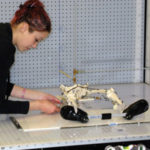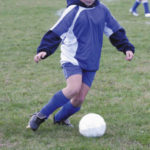
iStockphoto.com 176010888
By Katie Bell
Current Little League pitching guidelines provide insufficient lower extremity strength recovery time in youth pitchers, even when they are pitching at submaximal pitch counts, according to research from California published in January.
Study coauthor Jennifer Livingston, PhD, ATC, associate professor in the Department of Kinesiology at Azusa Pacific University in California, said, “In our pilot study, we didn’t collect any data related to injuries, but I’d suspect fatigued legs would require the pitcher to rely more heavily on the upper extremity to generate momentum, placing the arms at greater risk of injury.”
The study included 15 healthy male baseball pitchers (average age, 9 years) without a current injury or history of injury two months prior to the start of the study. Livingston and colleagues calculated the change in lower extremity force production after a pitching performance and over subsequent days of rest required for the pitchers to recover.
Using a handheld dynamometer, the researchers measured force production on the pivot leg and the stride leg for the gluteus maximus, hamstrings, gastrocnemius, gluteus medius, and quadriceps prior to pitching, immediately after pitching a submaximal number of pitches, and for the following four days. They collected the pitch velocity (PV) for each pitch and the rating of perceived exertion (RPE) immediately after each component to measure fatigue during performance.
They found that, on average, 47.8 pitches per set were thrown; the average PV was 20.4 m/s and the average RPE was 6.9. Twelve participants threw the assigned number of pitches before reaching 9 on the Pictorial Children’s Effort Rating Table (PCERT), which provides subjective information of the participant’s overall efforts and fatigue rate (based on scoring using a 1-10 scale, with “1” being “very very easy” and “10” being “so tired I’m going to stop.” One child completed all assigned pitches and reported a PCERT of 9 at the session’s end.
The researchers noted that, with the exception of maximum RPE, several factors were different between the four children aged 8 to 9 years and the 11 children aged 10 to 11 years. Older pitchers were heavier, taller, and had a higher fat-free mass than younger counterparts. The velocity and number of required rest days were higher in the older participants; their baseline strength was higher than strength immediately after pitching in the stride leg for the hamstrings, triceps surae, gluteus medius, and quadriceps.
Older participants had a lower percentage of baseline strength than younger participants in all muscle groups during the post-test, suggesting older players rely more on the lower extremity during pitching, according to the study authors.
The researchers also compared the number of days required for each muscle group to return to baseline force production levels with Little League rest guidelines for pitchers.
“The reduction in force production and time to recover varied among participants and muscles, but none of the boys fully recovered by the time Little League guidelines would permit them to pitch again,” said Livingston. “The number of muscles that failed to return to baseline strength ranged from one to all ten of the tested lower extremity muscles.”
Livingston said the data support the idea that not all pitchers should be expected to throw to their limit set by the Little League, and that “the coaches, parents, and youth athletes should watch for signs of fatigue and build endurance first.” Furthermore, the study found that the difference between mandated and actual required rest time was lower for participants who played other sports than for those who played only baseball.
Coauthor Nicholas Tavoukjian, MS, ATC, athletic trainer at Evergreen Physical Therapy Specialists, in Pasadena, CA, said, “The offseason should be taken advantage of; either by having kids play different sports that bias other muscle groups, or by including offseason strength training and conditioning. I think the model of playing Little League and travel ball concurrently is flawed and places kids at risk for overuse injury.” (See “Early athletic specialization: Misconceptions and hazards,” February 2017, page 15.)
Tavoukjian added, “I do not necessarily think the Little League guidelines should change. I do think there should be a greater emphasis on skilled strength training and conditioning for youth athletes to facilitate improved recovery and well-rounded athleticism.”
Commenting on the study, Gretchen Oliver, PhD, ATC, CES, assistant professor of kinesiology at Auburn University in Alabama, noted that, because the study did not collect the pitchers’ RPE on the final allotted day of rest, it’s unclear whether pitchers were fatigued in their lower extremity at that time—but they did have decreased strength.
“There is no need to push the kids to fatigue,” she said. “Get to know your pitchers, get to know their postures. Posture on the mound can say a lot.” More research examining fatigue, measures of fatigue, and consecutive days of fatigue and performance is needed, Oliver added.
Katie Bell is a freelance writer based in New York City.
Source:
Livingston JL, Tavoukjian NM. Lower extremity strength and recovery time in youth baseball pitchers: a pilot study. J Strength Cond Res 2018 Jan 29. [Epub ahead of print]
Rules, regulations, and policies. Williamsport, PA: Little League Baseball; 2017. littleleague.org/playing-rules/rules-regulations-policies. Accessed February 14, 2018.





